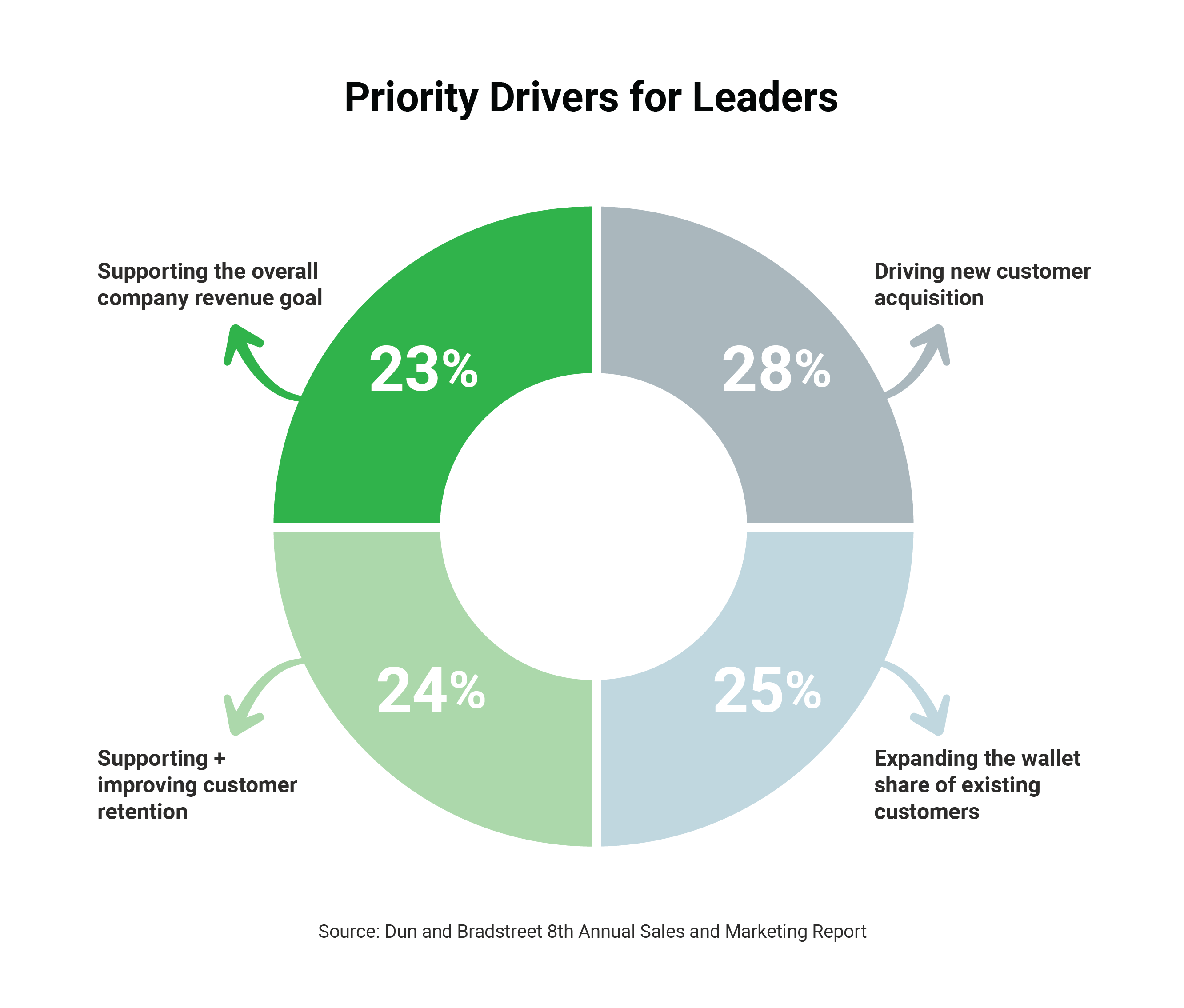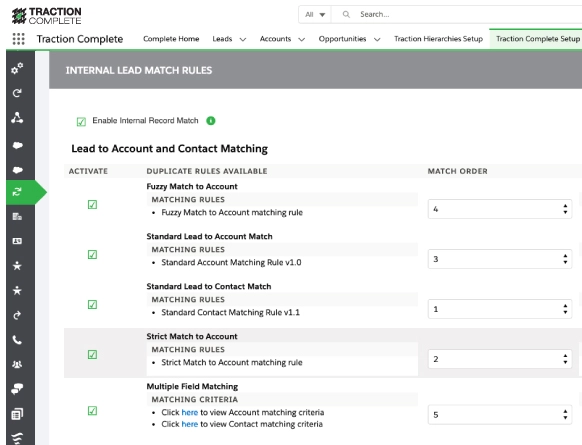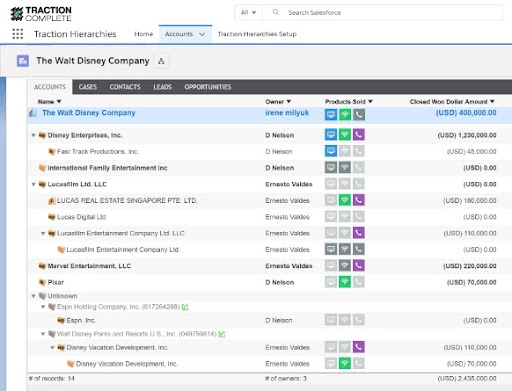Ready, Set, Revenue Operations
Get ready to RevUp your RevOps.
Revenue Operations has gained a ton of traction over the past few years. Gartner recently predicted that by 2025, three-in-four of the highest growth companies in the world will deploy a revenue operations model.
But heading down the road to RevOps isn’t as easy as turning on a light switch.
You’ve got a wealth of tools and knowledge at your fingertips, and that surplus of information can be overwhelming. Knowledge is siloed across disparate data sources, making it harder to work aligned as an organization. And while data continues to proliferate, companies must adapt to market changes.
What revenue initiatives do companies need to tackle in order to remain competitive? How are RevOps leaders finding continued success and staying ahead of the curve?
During the latest RevTalks, we asked industry leaders to share their top data priorities, tips, and tricks around cultivating a successful Revenue Ops engine.

What we learned, as Sean says, is there’s a widening adoption gap between what could be considered the industry “leaders” and the “rest.” Wherever you are in your RevOps journey, you need to break apart from the rest of the pack to effectively lead the way to revenue.
Let’s start with your revenue team. And if you already eat your revenue goals for lunch, skip ahead to the next section.
1. Align Your Revenue Operations Teams
94% of leaders agreed that the need to align their go-to-market teams grew in importance over the last 12 months.
D&B’s 8th Annual B2B Sales & Marketing Data Report
We’ve all heard the horror stories when teams work in silos – one team might create objectives and measure success strictly based on revenue, while another operates based on the number of leads.
When teams aren’t working together under unified goals, it only creates further division within the organization. On an individual scale, these teams may be hitting their objectives — but the company is missing their overall goals.
While this may not be a revelation for some, it’s a staggering confirmation of where industry leaders are headed. Now more than ever, teams need to adapt and adjust how they operate – especially when remote working environments create a natural divide between teams.
“Really what we saw was this increasing emergence in revenue teams,” Sean explains “You’ve got to create a structure that allows people to pull in their different expertise, to identify where their opportunities are, to align as a team, and move the organization forward together.”
The payoffs are a shared road to revenue:
- Supporting the overall growth of the business
- More effectively retaining existing customers
- Acquiring new customers
- Finding more effective ways to cross-sell and up-sell

Before anything else, your teams need to be on the same page – here are some quick tips to get started:
- Set shared departmental objectives that align with revenue goals
- Share reporting and analysis across departments
- Align under the same systems and priorities
We know it isn’t as simple as having all your teams show up to the same Monday morning meeting… So what do you do?
2. Double Down on Data Quality
Simply put, revenue teams that don’t get a handle on their data will lose.
9/10 of leaders agreed that data has played an inarguable role in their sales or marketing efforts – both in a positive or negative way. D&B’s 8th Annual B2B Sales & Marketing Data Report
No surprises here.
You need to consistently manage and govern data to keep it clean.
“Data changes on a constant basis,” Brooke stresses. “The rate of change has gone up dramatically in the last year so you need to have consistent management and governance of that data.”
Start with third-party data providers.
“Partner and align with third-party data providers that can assist in the augmentation, enrichment, and management of data,” says Sean.
This is crucial because companies are changing faster than ever, whether it’s due to accelerated growth or people switching roles or moving to new companies. In order for your data to be up-to-date and accurate, you need to enrich with live firmographic data that keeps up with the rate of change.
Being up to date with details like annual revenue or number of employees ensures that your revenue teams are marketing and selling to them appropriately.
Control how data enters your organization.
If there’s no rhyme or reason around how new accounts are created, teams will suffer from inconsistencies, a lack of information, and worst of all, duplicate accounts. Allow these entries to go unnoticed and in the blink of an eye, you’ll be dealing with a flood of inconsistent data.
What’s one proven way to control how data enters your organization?
Implement more sophisticated matching to manage incoming data and catch duplicates.
“If you’re simply allowing your account reps to enter new accounts on their own, that’s a recipe for disaster,” Sean says. “You need to have a consistent way in which there’s a matching mechanism so you can avoid duplication and proliferation of that data.”

This is essential for creating both new accounts and leads. If reps are able to create new accounts in your organization, you need to implement a “Search before Create” process that ensures there isn’t a duplicate account already in the system.
What about what happens if customer data comes in through a website form? Much like an island, leads and accounts aren’t connected in Salesforce. That customer account may already exist in your Salesforce system. In fact, a lead may already exist for that same person because of another form fill or because they downloaded an e-book.
The proliferation of duplicate, disconnected data only worsens – and it can cause a poor experience for the customer as well. What happens if multiple sales reps reach out and contact the same company? Or even worse, the same person? What if they reach out to someone who’s already a longstanding customer?
Here are some more tips and tricks to control data quality from our RevOps expert, Brooke:
- Avoid mass imports that will turn effective, clean data into dirty data
- Validation rules like country or website values are essential for preventing duplicate accounts
- Turn on state and country pick list to normalize and standardize all of your country values, so you can create a formula for territories, regions, etc.
Hear the tips in action straight from Brooke herself, watch the webinar:
Watch the Webinar
3. Empower Your Revenue Team with a 360-Degree Customer View
6/10 leaders say aligning go-to-market teams around consistent account data will be a priority in 2022, and interconnected teams will yield better results. D&B’s 8th Annual B2B Sales & Marketing Data Report
But “consistent” account data alone doesn’t paint the picture for your teams.
Your entire organization needs to be empowered with a connected and complete view of customer accounts.
The first step is to connect all of your accounts together so that you’re not missing out on any relevant information across the entire family tree. This alleviates the pain of connecting accounts one-by-one, which only ends in wasted time, potential human errors, and bottlenecks in your revenue generating process.
Visualizing a connected view of your largest customers opens up a gateway of opportunities and unlocks critical insights such as:
- What cross-sell, up-sell, and whitespace opportunities exist?
- Which reps have existing relationships with which customers?
- What parent and subsidiary accounts are related (and is there any overlap)?
Automate your account hierarchies.
Brooke uses account hierarchies to create a complete view of accounts, which it effective when working with customers that have a large geographical footprint and operate in different countries or regions.
“That enables us to build out account hierarchies automatically and see where we have regions of a merchant that we aren’t selling to or maybe make linkages that we weren’t aware of,” Brooke explains.
Here’s an example. It’s not obvious at all, from either the name or the website of each company, that Disney owns ESPN, Pixar, Lucasfilms and even Fox. Without a clear, connected account hierarchy, accounts are separated and Brooke’s team would have no idea that one was related to the other.

Drive revenue with cross-sell, up-sell, and whitespace opportunities.
Creating this understanding allows for teams to see the cross-sell or up-sell opportunities within a specific business. Since you’ve started with third-party enrichment, you can also uncover whitespace accounts outside of your Salesforce org. From there, BDRs, SDRs, and sales reps can effectively target accounts that could increase revenue.
Once account hierarchies are in place and provide a full picture of your customer, the next step is to create a 360-degree view of that customer by including data from all of your revenue teams.
The goal is to provide them with all the context you can about the customer’s interests, experiences and history so that each department is not operating in a silo and has 360 visibility.
Here’s how you can align your teams with different information about your customers:
- Add cases to your 360 view so that teams can have a full picture of the experience that each customer receives
- Provide your sales team with all the existing cases that have taken place with your customer success team
- Inform your customer success team about new marketing material and other products
- If you’re already linking leads to accounts, add them to your Customer 360 view so that everyone can see the leads across each account
- Notify the team when new activities take place so they can respond accordingly in real time
Looking to learn more on how you can get a 360 customer view? Try our Customer 360 for B2B webinar:
Watch the Webinar
4. Supercharge Your Account-Based Marketing
Account-based marketing (ABM) is a cornerstone strategy for RevOps. What’s eye-opening, however, is the stark difference between industry leaders who have implemented ABM strategies and the rest of the pack who have not.
86% of the teams that utilized an ABM strategy saw growth over the last 12 years, versus 36% saw growth of those who didn’t use an ABM strategy. –Sean Crowley, VP Portfolio Marketing at Dun & Bradstreet
So where do you start?
Identify the right accounts to create an Ideal Customer Profile.
With a unified view of customer accounts across your revenue teams, sales and marketing can quickly identify your customers with the largest potential for growth. From there, they can better align on account-based strategies for those key target accounts.
You’ll want to make sure you’re picking “preferred targets, while eliminating non-fit and non-profitable accounts,” says Sean. “The end goal of this process is about identifying and aligning your revenue team towards the highest value accounts, so make sure to weed out targets that don’t fit or might not be profitable.”
Personalization is the name of the game.
You also need to determine the scale of your strategy. When your strategy targets a larger number of accounts, there’s less personalization that can be done with a reasonable use of resources. On the flip side, the smaller your target strategy is, the more personalization, time, and effort can be spent.
Sean explains that for D&B’s digital marketing efforts, they tend to start at a broader range of accounts and then “narrow the focus based on what levels of engagement” they get.
Why? The B2B buyer journey is evolving.
“You start to layer on these types of personalization routines which address the consumerization of the B2B buying journey,” Sean adds. “We’re taking our personal preferences and how we buy consumer-based products. We’re trying to take that same approach but in the context of a B2B buying journey.”
At a high-level, here’s what you should focus on when building an account-based marketing strategy:
- Start by building out an Ideal Customer Profile
- Include both prospects and existing customers with growth potential
- Determine what level of personalization you want to provide
- Outline the scope of your campaign or the number of accounts you can manage with the determined level of personalization
- Refine list, and move to mid-funnel campaign strategies personalized to each business
- Measure the response, engagement and progression of the campaign
When it comes to account-based marketing, there’s a lot more under the hood. Don’t stretch yourself too thin and focus on a level of personalization that works for your team. The leaders recommend you start small and work your way up – do a few things well, not a lot of things sort-of-well.
Conclusion
The future is RevOps. Leaders need to place added importance on building revenue teams and aligning their departments — and not just doing it, but doing it well.
In order to lead the way to revenue, you need to start with clean, connected data and focus on the most important enterprise initiatives that will drive revenue.
“The focus for us this year is having a single place so that we can see all interactions across the organization with our merchants. With the end goal being that we create a delightful experience, and then it’s just easy and seamless to work with us.”
–Brooke Treseder, SVP Revenue Operations, Checkout.com
Top priorities for RevOps leaders:
- Align the goals and efforts of go-to-market or revenue teams
- Double down on data quality and create a master data management system
- Build a 360-degree view of your customers to understand potential opportunities
- Focus on strategic account-based marketing
Interested in hearing more about the future of RevOps? Watch the RevTalks webinar, you won’t regret it!




